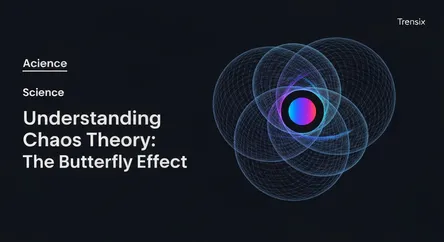Science
Understanding Chaos Theory: The Butterfly Effect

An introduction to chaos theory, explaining how tiny changes in complex systems can lead to massive, unpredictable outcomes.
What is it?
Chaos theory is a branch of mathematics that studies complex systems highly sensitive to initial conditions. It focuses on deterministic systems that, while following specific laws, appear random and unpredictable. The core idea is that a minuscule change in the starting point can lead to vastly different results over time. This principle is famously known as the "butterfly effect," where the flap of a butterfly's wings could theoretically influence the formation of a tornado weeks later. Chaotic systems are not truly random; they possess underlying patterns, feedback loops, and a form of intricate order.
Why is it trending?
While the theory has been around for decades, its relevance is growing with advancements in computing power, which allow for better modeling of chaotic systems. It has wide-ranging applications in fields like meteorology, economics, and ecology. Chaos theory offers a scientific framework for understanding phenomena that were once considered purely random. Its concepts are also popular in culture, frequently appearing in movies and books, which helps maintain public interest and illustrates how interconnected and unpredictable our world can be.
How does it affect people?
Chaos theory has practical implications in everyday life. It explains why long-range weather forecasting is so challenging, as tiny atmospheric changes can lead to completely different weather patterns. In finance, it helps model the volatile behavior of the stock market. The theory is also applied to understand traffic jams, where one driver braking suddenly can cause a major backup. On a personal level, it serves as a reminder that small, everyday decisions can have significant, unforeseen consequences on our lives and relationships.